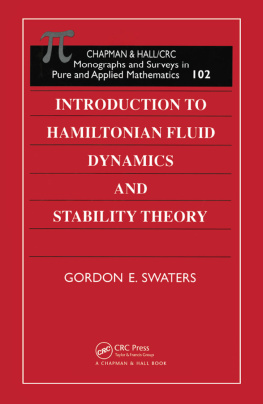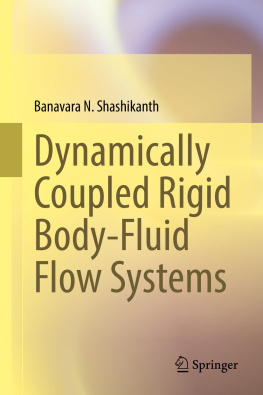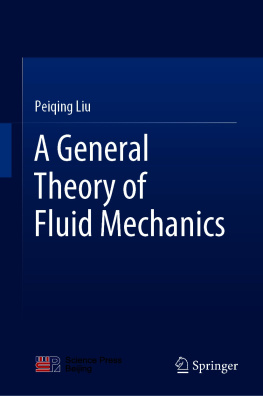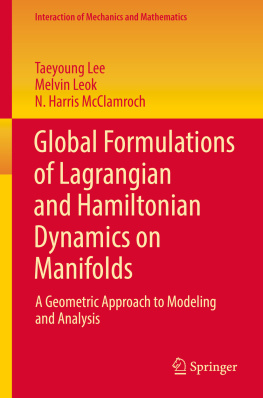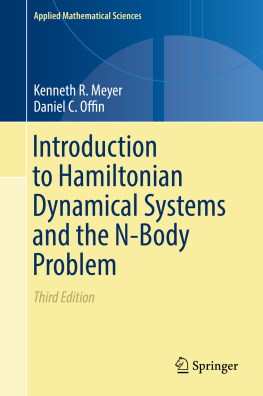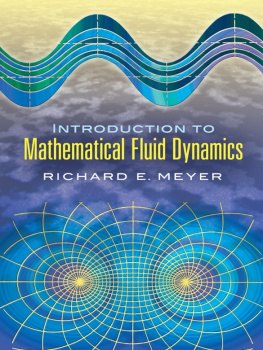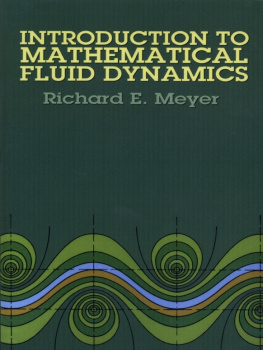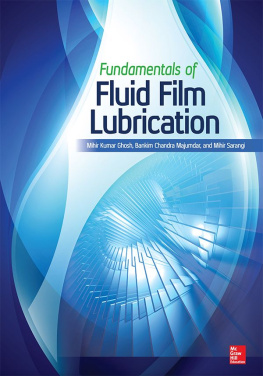Swaters - Introduction to Hamiltonian Fluid Dynamics and Stability Theory
Here you can read online Swaters - Introduction to Hamiltonian Fluid Dynamics and Stability Theory full text of the book (entire story) in english for free. Download pdf and epub, get meaning, cover and reviews about this ebook. City: Boca Raton, year: 2018, publisher: Routledge, genre: Home and family. Description of the work, (preface) as well as reviews are available. Best literature library LitArk.com created for fans of good reading and offers a wide selection of genres:
Romance novel
Science fiction
Adventure
Detective
Science
History
Home and family
Prose
Art
Politics
Computer
Non-fiction
Religion
Business
Children
Humor
Choose a favorite category and find really read worthwhile books. Enjoy immersion in the world of imagination, feel the emotions of the characters or learn something new for yourself, make an fascinating discovery.
- Book:Introduction to Hamiltonian Fluid Dynamics and Stability Theory
- Author:
- Publisher:Routledge
- Genre:
- Year:2018
- City:Boca Raton
- Rating:4 / 5
- Favourites:Add to favourites
- Your mark:
- 80
- 1
- 2
- 3
- 4
- 5
Introduction to Hamiltonian Fluid Dynamics and Stability Theory: summary, description and annotation
We offer to read an annotation, description, summary or preface (depends on what the author of the book "Introduction to Hamiltonian Fluid Dynamics and Stability Theory" wrote himself). If you haven't found the necessary information about the book — write in the comments, we will try to find it.
Swaters: author's other books
Who wrote Introduction to Hamiltonian Fluid Dynamics and Stability Theory? Find out the surname, the name of the author of the book and a list of all author's works by series.
Introduction to Hamiltonian Fluid Dynamics and Stability Theory — read online for free the complete book (whole text) full work
Below is the text of the book, divided by pages. System saving the place of the last page read, allows you to conveniently read the book "Introduction to Hamiltonian Fluid Dynamics and Stability Theory" online for free, without having to search again every time where you left off. Put a bookmark, and you can go to the page where you finished reading at any time.
Font size:
Interval:
Bookmark:


INTRODUCTION TO
HAMILTONIAN FLUID
DYNAMICS
AND
STABILITY THEORY
GORDON E. SWATERS
CHAPMAN & HALL/CRC
Monographs and Surveys in Pure and Applied Mathematics
Main Editors
H. Brezis, Universite de Paris
R.G. Douglas, Texas A&M University
A. Jeffrey, University of Newcastle upon Tyne (Founding Editor)
Editorial Board
H. Amann, University of Zurich
R. Aris, University of Minnesota
G. I. Barenblatt, University of Cambridge
H. Begehr, Freie Universitt Berlin
P. Bullen, University of British Columbia
RJ. Elliott, University of Alberta
R.P. Gilbert, University of Delaware
R. Glowinski, University of Houston
D. Jerison, Massachusetts Institute of Technology
B. Lawson, State University of New York
B. Moodie, University of Alberta
S. Mori, Kyoto University
L.E. Payne, Cornell University
D.B. Pearson, University of Hull
I. Raeburn, University of Newcastle
G.F. Roach, University of Strathclyde
I. Stakgold, University of Delaware
W.A. Strauss, Brown University
J. van der Hoek, University of Adelaide

INTRODUCTION TO
HAMILTONIAN FLUID
DYNAMICS
AND
STABILITY THEORY
GORDON E. SWATERS

CRC Press
Taylor & Francis Group
6000 Broken Sound Parkway NW, Suite 300
Boca Raton, FL 33487-2742
2000 by Taylor & Francis Group, LLC
CRC Press is an imprint of Taylor & Francis Group, an Informa business
No claim to original U.S. Government works
This book contains information obtained from authentic and highly regarded sources. Reasonable efforts have been made to publish reliable data and information, but the author and publisher cannot assume responsibility for the validity of all materials or the consequences of their use. The authors and publishers have attempted to trace the copyright holders of all material reproduced in this publication and apologize to copyright holders if permission to publish in this form has not been obtained. If any copyright material has not been acknowledged please write and let us know so we may rectify in any future reprint.
Except as permitted under U.S. Copyright Law, no part of this book may be reprinted, reproduced, transmitted, or utilized in any form by any electronic, mechanical, or other means, now known or hereafter invented, including photocopying, microfilming, and recording, or in any information storage or retrieval system, without written permission from the publishers.
For permission to photocopy or use material electronically from this work, please access www.copyright.com (http://www.copyright.com/) or contact the Copyright Clearance Center, Inc. (CCC), 222 Rosewood Drive, Danvers, MA 01923, 978-750-8400. CCC is a not-for-profit organization that provides licenses and registration for a variety of users. For organizations that have been granted a photocopy license by the CCC, a separate system of payment has been arranged.
Trademark Notice: Product or corporate names may be trademarks or registered trademarks, and are used only for identification and explanation without intent to infringe.
Visit the Taylor & Francis Web site at
http://www.taylorandfrancis.com
and the CRC Press Web site at
http://www.crcpress.com
To my son Sean G. Swaters.
Long may love reign over him.
Contents
About the author
Gordon E. Swaters is Professor of Mathematical Sciences and Director of the Applied Mathematics Institute at the UNIVERSITY OF ALBERTA. He is also an adjunct Professor in the Department of Earth & Atmospheric Sciences.
Gordon obtained the B. Math. (Hons.) degree from the UNIVERSITY OF WATERLOO and the Ph.D. from the UNIVERSITY OF BRITISH COLUMBIA.
Gordons research is focussed on understanding nonlinear wave and eddy processes in planetary-scale atmosphere and ocean dynamics. In particular, he has made contributions to understanding the destabilization of buoyancy and density-driven ocean currents for which he was awarded the 1994 Presidents Prize of the Canadian Meteorological and Oceanographic Society (CMOS) the most prestigious research award given by that society. Ten years earlier, in 1984, Gordon was awarded the Graduate Student Prize by CMOS for showing that the formation of large scale ocean eddies in the northeast Pacific ocean could be correlated to current changes forced by El Nino/Southern Oscillation events in the tropical Pacific.
In addition, Gordon has been a recipient of the Faculty of Science Research Award, McCalla Research Professorship and a Killam Annual Professorship at the UNIVERSITY OF ALBERTA.
Gordon was also a member of the Canadian Scientific Team of the Surface Velocity Drifter Program part of the World Ocean Circulation Experiment. This multinational research program made an important contribution in helping to understand the role of the oceans in Earths evolving climate.
Acknowledgments
Science is not a competition between individuals to see who gets the biggest grants or publishes the most papers. Blair Kinsmans eloquent preface to his book Water Waves expressed the point that Science, in addition to its obvious utilitarian importance in human affairs, is about a community of men and women engaged in conversation. There are two members of this community that I would like to publicly acknowledge here. The first is Lawrence Mysak who taught me that the give and take of this conversation is not about who is better, but is simply the process of discovering the truth. The second is Paul LeBlond who taught me not to confuse the language of this conversation for the conversation itself. It is the spirit of community in Science that I cherish the most and I thank Lawrence and Paul for introducing me to it.
I would also like to thank the Natural Sciences and Engineering Research Council of Canada, the Department of Fisheries and Oceans of Canada, and the Atmospheric Environment Service of Canada for their financial support of my research.
The study of the dynamics of fluids remains one of the most difficult areas in all of science. From the generation of water waves seen at the beach, to the formation of the Great Red Spot on Jupiter, there are no completely accepted explanations. In some respects this may seem quite remarkable since, so far as we are concerned here, the governing equations of fluid dynamics, the Navier-Stokes equations have been known for well over a hundred and fifty years (see the remarks by Lamb, 1932 concerning the contributions of Navier, 1827; Poisson, 1831; de Saint Venant, 1843; Stokes, 1845). The Navier-Stokes equations are a system of nonlinear partial differential equations in which the nonlinear terms play an essential role in determining the evolution of the flow. The enormous technical and conceptual difficulties associated with understanding nonlinear dynamical systems may help to explain why fluid dynamics temporarily lost its appeal as a fashionable research area in the middle third of the 20
Font size:
Interval:
Bookmark:
Similar books «Introduction to Hamiltonian Fluid Dynamics and Stability Theory»
Look at similar books to Introduction to Hamiltonian Fluid Dynamics and Stability Theory. We have selected literature similar in name and meaning in the hope of providing readers with more options to find new, interesting, not yet read works.
Discussion, reviews of the book Introduction to Hamiltonian Fluid Dynamics and Stability Theory and just readers' own opinions. Leave your comments, write what you think about the work, its meaning or the main characters. Specify what exactly you liked and what you didn't like, and why you think so.

